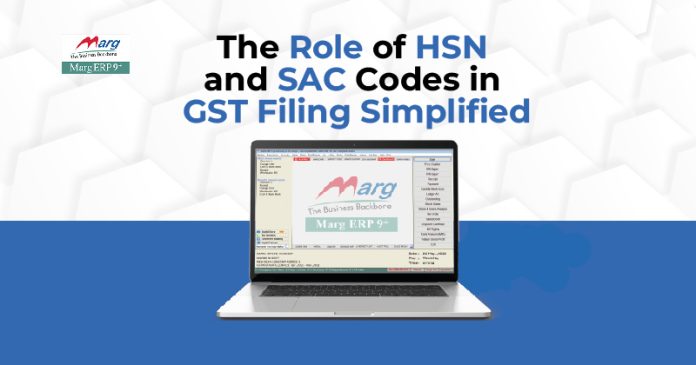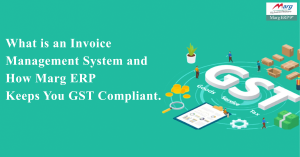Overwhelmed by the complexities of digital financial compliance, the fast-moving business owners of today’s world often need help to keep up with them all. GST, or the Goods and Services Tax, was instituted by India in 2017 as a single uniform tax regime that unifies many state and central taxes. Among the big-ticket aspects of compliance with GST lies HSN or Harmonized System of Nomenclature, and SAC, that is, Services Accounting Code. These codes also help in the correct and proper filing of GST returns for businesses.
But for most business owners, this explanation of HSN and SAC codes seems like a task beyond their capabilities. Let’s break it down step by step to know and simplify the role of these codes and how they impact the filing of GST.
What are HSN and SAC Codes?
Before diving into their role in GST filing, let’s first understand what HSN and SAC codes are:
- HSN Code: This is a global classification system under the umbrella of the World Customs Organization (WCO). The HSN code is 8 digits long and helps to classify products worldwide. In India, merchants dealing in commodities should be using HSN codes to ascertain the commodity traded. HSN makes the filing of GST easier through the common language of commodities.
- SAC Code: While the HSN code is for commodities, the SAC code has relation with classification of services under GST regime. Like HSN and SAC codes are also 6 to 8 digits in length, therefore all services ranging from consultancy to IT support will be classified in standardized fashion. This is mandatory for service providers to file GST returns accurately with the tax authorities.
Now that we have a basic understanding of what these codes are, let’s move on to why they are so important for GST filing.
Why are HSN and SAC Codes Important in GST Filing?
The GST system in India works on the principle of seamless flow of input tax credit, ensuring transparency at every stage of the supply chain. However, for this system to work smoothly, businesses must accurately categorize the goods and services they deal with. This is where HSN and SAC codes come into play.
Here’s why these codes are critical:
- Ensuring Accurate Tax Calculation: Under GST, different rates are applicable to different goods and services. Luxurious goods will attract higher rates than essential commodities such as food items. With the help of usage of HSN or SAC codes, businesses ensure that the correct tax rate is applied to obviate possibilities of overcharging as well as lesser payments.
- Simplified GST Return Filing: Listing down each of these products or services for GST return filing, in case of businesses dealing with various kinds of products or services, would be an Herculean task. HSN and SAC codes have thus eased such a task by helping classify goods or services under one code, thereby simplifying return filing.
- Global Standardization: International recognition of the HSN codes helps bring in a standardized system for Indian businesses that can be taken cross border. This is specifically required for the businesses that entail imports and exports, where the confusion about foreign clients and suppliers reduces.
- Avoiding Penalties: Misclassification of goods or services will result in the incorrect filing of the GST, which is attractable to penalty. The use of appropriate HSN and SAC codes for the commodity or services would help a business avoid costly errors and ensure that they are on the right side of GST law.
How HSN and SAC Codes Impact Businesses of Different Sizes
Whether you’re a small business owner, a medium-sized enterprise, or a large corporation, HSN and SAC codes affect you differently. Here’s how:
Small Businesses (Turnover up to Rs. 1.5 crore):
- If your business has a turnover of up to Rs. 1.5 crore, you are not required to use HSN codes while filing GST returns.
- However, it’s still a good practice to familiarize yourself with the codes, especially if your business is growing, as you will need them once your turnover exceeds Rs. 1.5 crore.
Medium Businesses (Turnover between Rs. 1.5 crore and Rs. 5 crore):
- For businesses with a turnover between Rs. 1.5 crore and Rs. 5 crore, the requirement is to mention a 2-digit HSN code while filing GST returns.
- This ensures that your products are categorized at a high level, making it easier to manage your tax filings without going into too much detail.
Large Businesses (Turnover above Rs. 5 crore):
- If your turnover exceeds Rs. 5 crore, you are required to use a 4-digit HSN code in your GST filings.
- For businesses involved in export or import, using the full 8-digit HSN code is mandatory, ensuring proper categorization in global trade.
For service providers, the same rules apply using SAC codes based on turnover and the complexity of services offered.
Common Challenges Faced by Businesses in Using HSN and SAC Codes
While HSN and SAC codes simplify GST filing, businesses still face certain challenges when dealing with these codes:
- Confusion in Code Selection: With thousands of HSN and SAC codes available, choosing the correct one can be confusing, especially for businesses dealing in multiple product categories or offering diverse services.
- Frequent Updates: The GST council regularly updates tax rates and HSN/SAC classifications, making it important for businesses to stay updated to avoid filing incorrect returns.
- Compliance Burden for SMEs: Small and medium enterprises often lack the resources to hire tax professionals, making it harder to manage HSN and SAC code compliance on their own.
How to Overcome These Challenges
To address these challenges, businesses can adopt the following practices:
- Use Automated Accounting Software: Today, most accounting software, like Marg ERP, come with in-built HSN and SAC code databases. These tools automatically apply the correct code based on the product or service, significantly reducing the risk of errors.
- Consult with Tax Professionals: For businesses dealing with complex products or services, it’s always a good idea to consult with a tax professional who can guide you on the correct HSN and SAC codes to use.
- Stay Updated on GST Changes: The GST Council regularly updates HSN and SAC code lists and tax rates. Businesses must stay informed about these updates by subscribing to newsletters from the GST portal or consulting tax professionals regularly.
The Future of HSN and SAC Codes in GST
As India moves toward a more digitized and streamlined tax system, the role of HSN and SAC codes will continue to evolve. With the introduction of e-invoicing and greater automation in GST filing, businesses will need to stay vigilant about correct product and service classification.
The government is also working to make the GST filing process more business-friendly, with plans to reduce the compliance burden for SMEs. However, businesses must do their part by ensuring that they file their GST returns accurately and on time.
Final Thoughts: HSN and SAC Codes as Key Pillars of GST Compliance
The role of HSN and SAC codes in GST filing cannot be overstated. These codes serve as the backbone of product and service classification under the GST system, ensuring accuracy, transparency, and standardization. For businesses, understanding these codes and applying them correctly is not just a legal obligation but also a smart business practice that can save time, reduce errors, and prevent penalties.
In conclusion, while the HSN and SAC codes may seem like technical jargon at first glance, they are tools designed to make the complex world of GST filing easier for businesses. By embracing these codes and integrating them into your daily accounting practices, you’re not only ensuring compliance but also contributing to a more streamlined and efficient tax system.
Read More:-
- What is GSTR 9 and How a Pharmacy Billing Software Keeps You GST Compliant. Managing GST compliance can be tricky for pharmacy owners, especially with multiple purchase bills, supplier returns, and input tax credit tracking. GSTR-9, the annual GST return, brings all these details together for a complete yearly… Read more: What is GSTR 9 and How a Pharmacy Billing Software Keeps You GST Compliant.
- What is an Invoice Management System and How Marg ERP Keeps You GST Compliant. GST is going through a lot of changes and evolutions in recent months from GST 2.0 announced on 3rd September 2025 (effective from 22nd September 2025) to GSTR-9 Table 8A update in IMS (Invoice Management… Read more: What is an Invoice Management System and How Marg ERP Keeps You GST Compliant.
- Section 122 of CGST Act Simplified: Stay Penalty-Free with Marg Billing Software Section 122 of the Central Goods and Services Tax (CGST) Act deals with penalties and offences under GST law. It is aimed at curbing non-compliance such as false invoicing, mis‐claiming input tax credit (ITC), suppression… Read more: Section 122 of CGST Act Simplified: Stay Penalty-Free with Marg Billing Software
- Section 46 of the CGST Act & the GST 2.0 Era: Why Compliance Can’t Wait Compliance is the most important part of today’s business. It enhances company’s reputation, minimises financial and regulatory risks, and improves overall operations and financial management. Therefore, you need to have a solid understanding of Sections… Read more: Section 46 of the CGST Act & the GST 2.0 Era: Why Compliance Can’t Wait
- Section 31 of the CGST Act, 2017: A Comprehensive Guide to GST Invoices and Compliance Section 31 of the Central Goods and Services Tax (CGST) Act, 2017, outlines the requirements for issuing tax invoices, a fundamental aspect of the Goods and Services Tax (GST) framework in India. A tax invoice… Read more: Section 31 of the CGST Act, 2017: A Comprehensive Guide to GST Invoices and Compliance

























